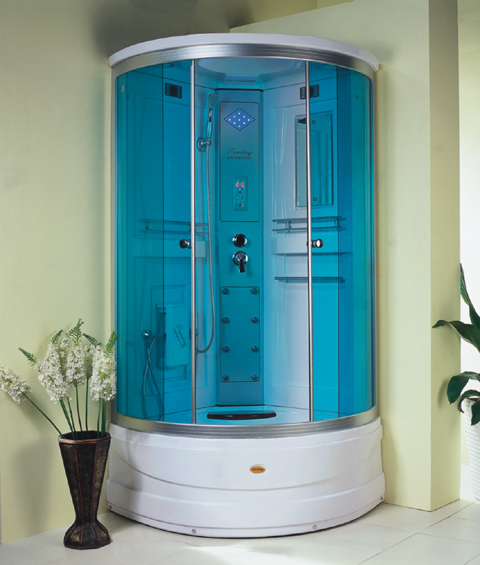お風呂に換気扇を設置すると窓の曇りを解消できます, 蒸し暑い鏡. ただし、浴室換気扇または浴室排気ファンの取り付け方法は次のとおりです。? ファンは常に屋外に排気する必要があることに注意してください。; ダクトが屋根裏部屋に単純に吹き込むことを決して許可しないでください, クロールスペースまたはその他の囲まれたエリア. また, the installation will go much quicker if you ask a spouse or friend to help be in the attic while you work from below, or to hand you tools while you’re on the ladder.
Keeping mold and mildew out of your bathroom can be a never ending battle. Every time you run hot water, you create steam. That steam penetrates every crevice, and soon cools down and turns to water. When this happens in a protected area that doesn’t dry efficiently, you have created a prime breeding ground for a multitude of mold spores.
While there are many products on the market that will kill the spores and clean the stains they leave behind, the best treatment is prevention. The key to preventing mold and mildew is to get the moist air out of the bathroom before it has a chance to condense. An exhaust fan is the best way to do this.
A small exhaust fan, typically mounted in the ceiling, pulls the moist air right out of the bathroom and sends it up an exhaust pipe. There are a wide range of fans available for you to choose from, and whether you are installing one for the first time or replacing an inefficient one, it will make a major difference in the battle against mold.
Exhaust Fan Types and Quality
There are several different styles of exhaust fans, as well as levels of quality. The first choice that you need to make is whether or not you want a light integrated into your unit. If so, then this is going to require a little bit more electrical expertise during the installation stage. But by getting a unit that is integrated, you can add a fan without having to create two separate openings in your ceiling to house both a light and the fan.
As far as quality is concerned, there are typically two measuring factors that determine quality. The amount of air the fan moves is measured in CFM, which stands for cubic feet per minute, and is essentially a measurement of how much air the fan will remove per minute. The higher quality fans will move more air than a lower quality one. The other unit of quality measure is found in how loud the unit is. Most manufacturers put a noise rating right on the package. The quieter the unit, the higher the quality.
Tools and Supplies
Once you have selected the product you want to install, it’s time to make sure that you have all of the necessary tools. You will need the following:
- Screwdrivers: You’ll probably need both a Phillips and flat-head. These are used for the mounting brackets within the electrical box and the housing on the fan.
- Wire stripper: You will use this to prepare the wires in your ceiling. You’ll have to strip 1/2″ to 5/8″ from each wire so that it can be attached to the wire that comes pre-installed into the motor of your new unit.
- Wire Nuts: They will probably come with your new unit, but it’s a good idea to have a few extra lying around. The yellow ones should be the appropriate size for this project.
- Exhaust Duct Kit: If you don’t already have a fan system in place, you will need to install a vent to relocate the air that you are sucking out of your bathroom. You can buy a kit that comes with all of the necessary pieces to do this.
- Electrical Tester: You will use this to make sure that you have continuity and that your wiring is correct.
- Jab Saw: This will be used to cut the access hole in your ceiling.
Wiring the fan. 残念ながら, the wiring in every house is a little bit different. If your bathroom light is already wired into a wall switch, then that is the best place for you to wire your fan. Since every situation is going to be unique, I would recommend buying a book on electrical work. It will sketch out the many different options and types of switches and how each one should be wired. With different colors of wire and varying sizes, it’s best to have it all laid out clearly in front of you.
Opening the ceiling. Ideally, your new exhaust fan will be mounted right over the hole in your ceiling where the light is. In the rare instance that you don’t have an overhead light in your bathroom, you will need to create an opening. Use the duct kit that you purchased to determine how big the hole should be. The plasterboard ceiling can be cut with the jab saw. The cut doesn’t have to perfect since the outside housing of the fan will cover any mistakes, but you still want to be fairly accurate so that you don’t lose any insulation value around the outside of the duct pipe.
Installing the duct kit. You will need to mount the box that your fan will hang on right above the hole. This box can be attached directly to the joist or, if the hole is too far from the joist, you can use the special hanger that comes with the kit. This hanger consists of a steel bar that lays across the joists and allows the box to slide back and forth, so that you can locate it directly over the hole. Attach the length of duct hose onto the mounting bracket.
Venting to the outside. Once the hose is run up into the attic, you will need to find your way to the closest roof soffit. Cut a hole into the soffit according to the instructions that came with your kit, and attach the hose to the vent that mounts on the outside of the soffit. This vent should also be included in your kit. Since the soffit faces down, you don’t have to worry about rain, snow or other debris getting into the exhaust pipe, and the moist air from your bathroom will be safely pumped outside.
By taking the time and investing the money required to get this fan installed, you will actually be saving yourself time and money in the long run. The damage that can be caused by mold and mildew, when they are allowed to go unchecked, can be quite costly and messy to repair. Installing your exhaust fan will save you cleaning time, and will help protect the already large investment that you have made in your home.






